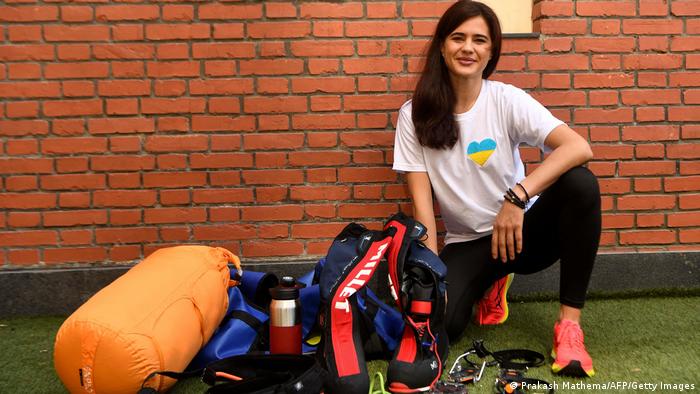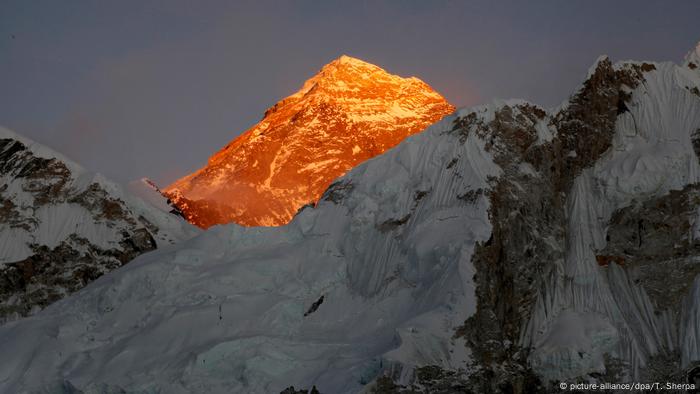It's the first big peak wave of the spring season: Among the many who climbed the highest mountain on earth this Thursday was a Ukrainian – and a group of exclusively black mountaineers.

Summit success for Antonina Samoilova, the only Ukrainian on Mount Everest this year
Antonina Samoilova had a Ukrainian flag in her backpack when she reached the summit of Mount Everest at 8,849 meters this Thursday as one of several dozen members of commercial teams. She is climbing the highest mountain on earth “as another reminder to the world that Ukraine is still fighting and we will fight until we win,” the 33-year-old previously announced on Instagram. Samoilova was the only Ukrainian among 317 foreign mountaineers authorized by the government of Nepal to climb Everest this spring.
No Everest ban for Russian climbers
Most Ukrainian climbers had abandoned their plans in the Himalayas for this climbing season because of the Russian war of aggression against their homeland. In contrast, the number of 17 Everest summit aspirants from Russia was in the same range as in 2021, when the government issued a record number of 408 Everest permits despite the rampant corona pandemic.
View this post on Instagram
In the run-up to this year's spring season, voices had been raised in Nepal to ban Russian mountaineers from the climbing routes of the Himalayan state, in a similar way to other sports. However, the government in Kathmandu did not respond to this demand. However, unlike its Southeast Asian neighbors India and Pakistan, Nepal voted for a UN resolution condemning the Russian invasion of Ukraine.
Attention guaranteed
That Everest -Ascents are used to spread political or other types of messages, has a long tradition: after all, Mount Everest guarantees attention. Simply because it is the highest of all peaks – and probably the only mountain that is anchored in everyone's consciousness.

Mount Everest – the mountain everyone has heard of
Yet climbing Everest has long since ceased to be an exclusive affair. Everest has been climbed more than 10,000 times since New Zealander Edmund Hillary and Nepalese Sherpa Tenzing Norgay were the first to climb the summit in 1953. Only around two percent of these successes were achieved without bottled oxygen. And without Sherpa support, almost all Everest aspirants would probably not get beyond the base camp at a good 5300 meters. But such details hardly play a role in public perception.
Point out barriers for black people
Anyone who has been on Everest is usually heard. This not only applies to the Ukrainian Samoilova, but also to the eleven members of the “Full Circle Everest” team. It is the first Everest expedition made up entirely of black mountaineers. According to reports, eight of them reached the summit this Thursday (with bottled oxygen).
View this post on Instagram
The project had already attracted a lot of media interest in the run-up – because of the team's political message: With their ascent, the mountaineers wanted, in their own words, “to emphasize the barriers that still exist for black people in outdoor sports” and the next generation inspire mountaineering people of color to “strive for their personal peaks”.
Previously, only nine black people had climbed Mount Everest. The first was in the spring of 2006, 16 years ago, the American Sophia Danenberg – at that time largely unnoticed by the public. Today, the 50-year-old analyzes environmental policy for the US aviation group Boeing and maintains contact with international companies and organizations. Danenberg expects the number of black mountaineers to “rise exponentially” in the next ten to 15 years. Last but not least, thanks to high-profile Everest summit successes such as the “Full Circle Everest Expedition”.